Sprinkle Factory
Carol Anne Wein (2008) describes the process of emergent curriculum, saying:
“. . . its trajectory develops as the consequence of the logic of the problem, the particular connections that develop as participants bring their own genuine responses to the topic and collaboratively create the course to follow out of these multiple connections.”
This describes so clearly our process in the nursery; there is a dynamic relationship between play, the children’s questions and ideas, and the experiences, books and conversations that we offer in response.
We observe the children’s play and interactions, keeping detailed notes of dialogue, social connections, play themes, ways of using materials, and questions that arise, and then use that information to decide next steps, in dialogue with the children, always willing to have our minds changed by the new observations. We could make you a grand list of plans we didn’t follow because they were no longer relevant to the children, and an even grander list of things that transpired because of the space created for the children to continue inquiring. Instead, we’ll tell you the story of how it unfolded this fall.
Baking has been a pervasive and persistent interest this fall. It started in the giant pile of sand outside; there were cupcakes, cakes, birthday cakes, super energy muffins, chocolate cake, cakes for mom, and even a kitty bakery. The children would work together, negotiating materials, space, and ideas, deciding on flavors, candles, structure, where to bake, for how long, and just the right moment to serve it. Genishi and Dyson (2009), drawing on the work of Corsaro, state that “children orchestrate their manipulations of objects, voices, and indeed, languages themselves as they repeat and extend one another’s contributions to the making of a world. Play then, is a socially complex communicative act.” Even in the first few days of the year, as a newly forming community, the children were engaging in this meaningful and complex social work.
As we explored the blocks in our room during inquiry, we offered a provocation, described as “something that must be responded to, that we cannot ignore” by Carol Anne Wein (in Stacey, 2009). We placed pots, pans, plates and utensils in the block area, alongside the small cube blocks during a block inquiry one day. The children responded by making ovens, stoves, grills, sinks, dining room tables, and plate after plate piled high with block food was served. This continued for several days, and we deepened their play ideas by looking at restaurant menus and reading Big Jimmy’s Kum Kau Chinese Takeout by Ted Lewin. This inspired conversations about just how take out works, “you can do pick-up and you can eat it at home” (Mylah) and “they can come and knock on your door” (Lyndon). The children continued to work and play in the restaurants they built, and also wrote many menus with a wide variety of food.
They explored cooking at the sand table indoors.
The children had the idea that we should make cupcakes, and after lengthy deliberations, we landed on vanilla cupcakes with chocolate and vanilla frosting.
To explore the food itself we read Eating the Alphabet by Lois Ehlert and we tasted several foods “ like a scientist” inspired by Ada Twist, Scientist by Andrea Beaty. In this process we developed of ways to describe food, taste, texture, smell, and appearance. The children tasted things that were familiar and unfamiliar, and had the experience of their opinion being welcomed, whether, positive or negative.
After awhile we observed that the children’s play around baking was decreasing. We decided to pause and gauge their interest, and create space for the children’s ideas to move in another direction. Using open ended materials with young children always provides a window into what ideas and questions are percolating for them. Materials like moonsand, sand, water, clay, playdough, blocks, and legos all invite children to layer their meanings on top of them. So, we asked “What can we build with blocks?” and their ideas centered on planes and airports.
We spent several inquiries building airports, waiting rooms, conveyor belts, planes, and runways. We gathered information from The Airport Book by Byron Barton and The Airport Book by Lisa Brown. In the process of airport play and exploration, they built a life-size plane interior. We talked together about the roles we would want to take in the airport most of the children wanted to be involved in making and serving food. They used a wheeled cart from the little house, filled it with food, and served the passengers, while others made airplane menus!
This particular moment was powerful; the children’s focus seemed to be aiming in a new direction, and yet, through the many possibilities invited by the plane play, they expressed clearly that their interest was still very much rooted in food and the roles and relationships they could have with one another through food. Food even entered our morning meeting greeting when Alex invented the “heating up the microwave greeting” in which you pretend you have buttons on your hand. Seeing that this interest was still central for the, we dove back in by baking popovers, placing moon sand and a variety of tart molds in the sensory table, and reading The Bakeshop Ghost by Jacqueline Ogburn.
As we read this book, the children revisited their play around baking, and asked “can we make a cake?” We looked at the many cakes in the book, and made a list of all of the types of cake we might want to make. We shared ideas and voted over several days, and decided on chocolate cake.
Meanwhile, several children built a sprinkle factory over the course of two days. We thought this was an interesting new direction, and shared images their work with the rest of the group, and asked if they thought we should make sprinkles too. This was another moment where we paused to assess the children’s interest and ideas, and through our conversations about sprinkles, we saw that they were invested in this idea and eager to see what they could do. As we prepared to make sprinkles, we also asked if we might make a sprinkle factory as well. We watched a short video to learn how sprinkles are made, and then began to build collaboratively using blocks. We also offered play dough and extruders and knives for exploration at tables. As we worked together and learned more, the children began including the vocabulary from the sprinkle making process in their play, including extruders, dough, ingredients, dryer, control buttons, and conveyor belts.
We drew plans for our factory and used them to build during inquiry.
We wrote a book, How to Make Sprinkles, during half group time. The children recalled the ingredients they used, and the order of the steps in the process. As a whole group we negotiated the two different sets of text to create one set of directions, and talked about how writers edit their work by changing things to make them include important details.
Also, over the course of our many days of cooking, children asked if they could take the recipes home so they could make these foods with their families. We talked with them about the idea of a cookbook, and together we illustrated books including all of the recipes we’ve made this year. These experiences arose out of questions and ideas that came from the children.
The many different ideas and explorations embedded in this inquiry are a result of the interests of the children, their questions and purposes, driven by their play, propelled forward through provocations and conversations. We could not have known what was to transpire at the outset, but the directions the children chose were exciting, meaningful, authentic, and led them and us to a greater connection with food, cooking, building, talking, and developing relationships with each other.
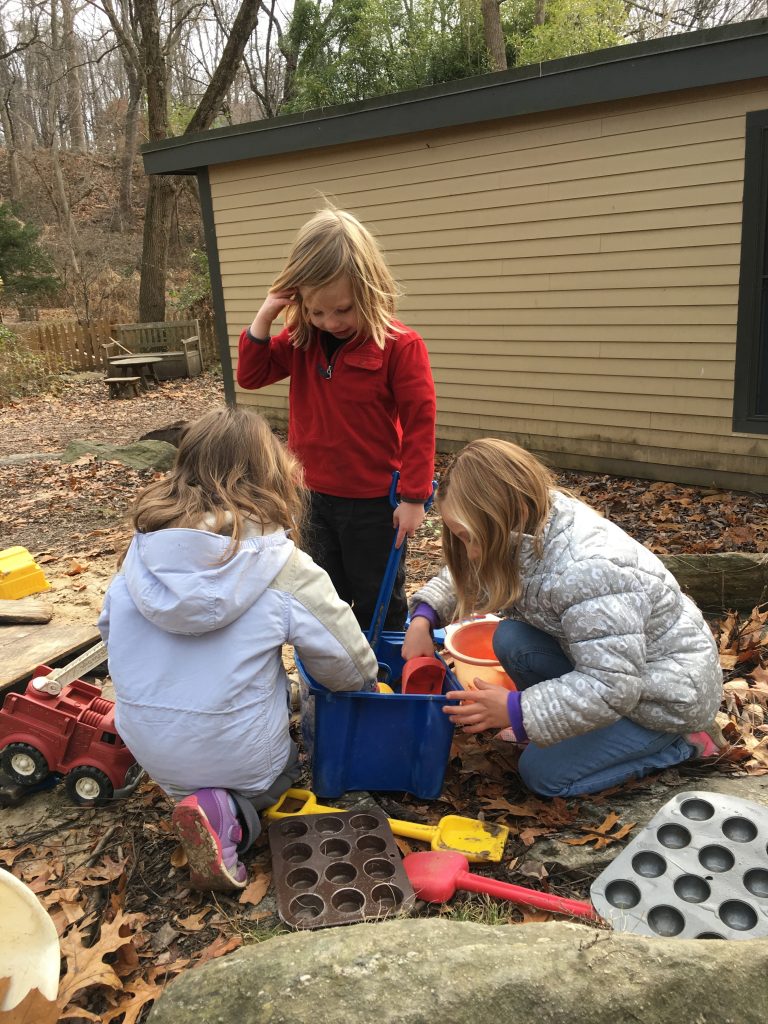 Here, a few children decide to play Santa’s reindeer and make a sticky dough “to make food to help us survive the long winter days and the long winter nights.”
Here, a few children decide to play Santa’s reindeer and make a sticky dough “to make food to help us survive the long winter days and the long winter nights.”
It is clear in reflection that there was indeed a lot of richness in our work. We often talk about how in an emergent and inquiry based curriculum, academic skills are embedded in the curriculum in ways that are meaningful. To that end, we thought we would offer a list of some of the skills that were embedded in this play.
- Dramatic play: using language to negotiate ideas, roles, relationships, and materials, as we did in the restaurant, on the plane, and in the sprinkle factory.
- Open ended exploration: creating different dishes with glass jewels and sand, cooking with moon sand, building with blocks, creating with play dough, all while creating meaning and narrative about what was happening and why.
- Literacy: reading stories, making inferences and connections, understanding what menus, cookbooks, and recipes are, writing menus, writing a book and illustrating a book, using writing in dramatic play to further the plot and mediate interactions, developing the understanding that the illustrations and text help each other, understanding that we can write about something we know and something we did, understanding that we can use our names to show our preferences as when we wrote our names and ideas down in the voting process.
- Vocabulary development: children learned specific vocabulary in the service of cooking including: ingredients, recipes, measurements, tools, and specialized words when making sprinkles.
- Play Planning: we talked often about what we would do before doing it, so that children had a mental map as they entered into play or exploration. With our sprinkle factory, they practiced drawing their plans, developing the understanding that you can draw your ideas, and that you can use your drawings to make something.
- Math: counting, comparing quantities, analyzing visual data as we did when voting for different foods to cook or sharing ideas, using symbols and signs to represent data, building, and categorizing.
- Fine and Gross motor skills: chopping, mixing, sprinkling, stirring, using extruders, squeezing sprinkle dough out of bags, carrying chairs and big blocks, carrying buckets of sand and water to mix them on the playground.
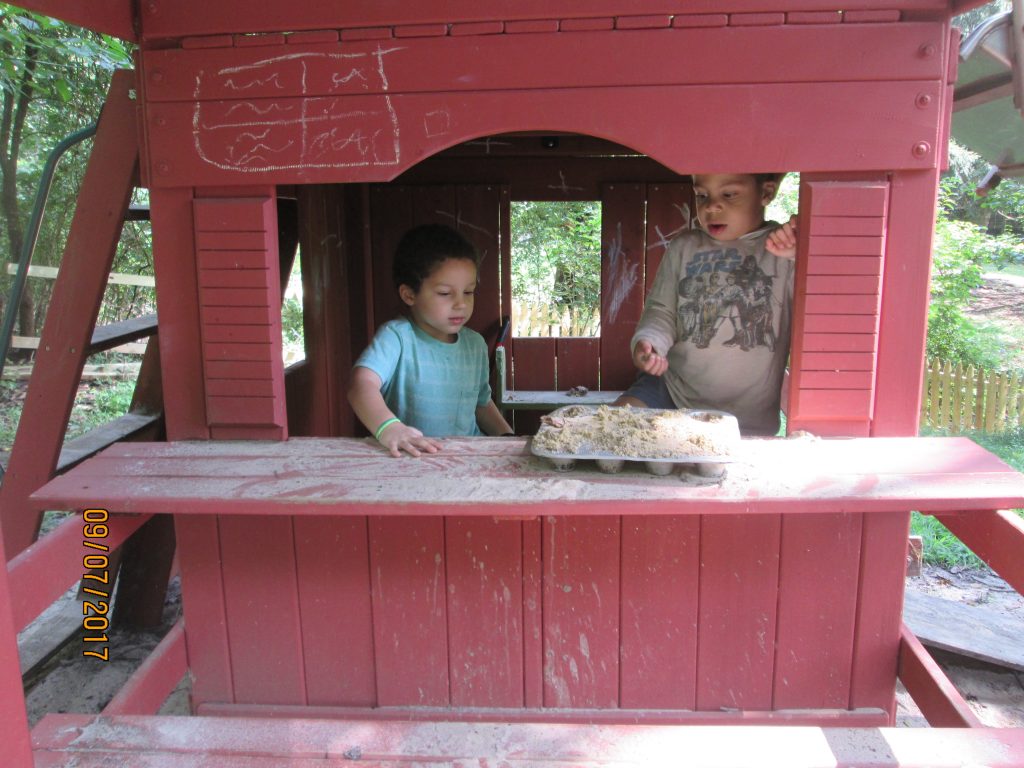
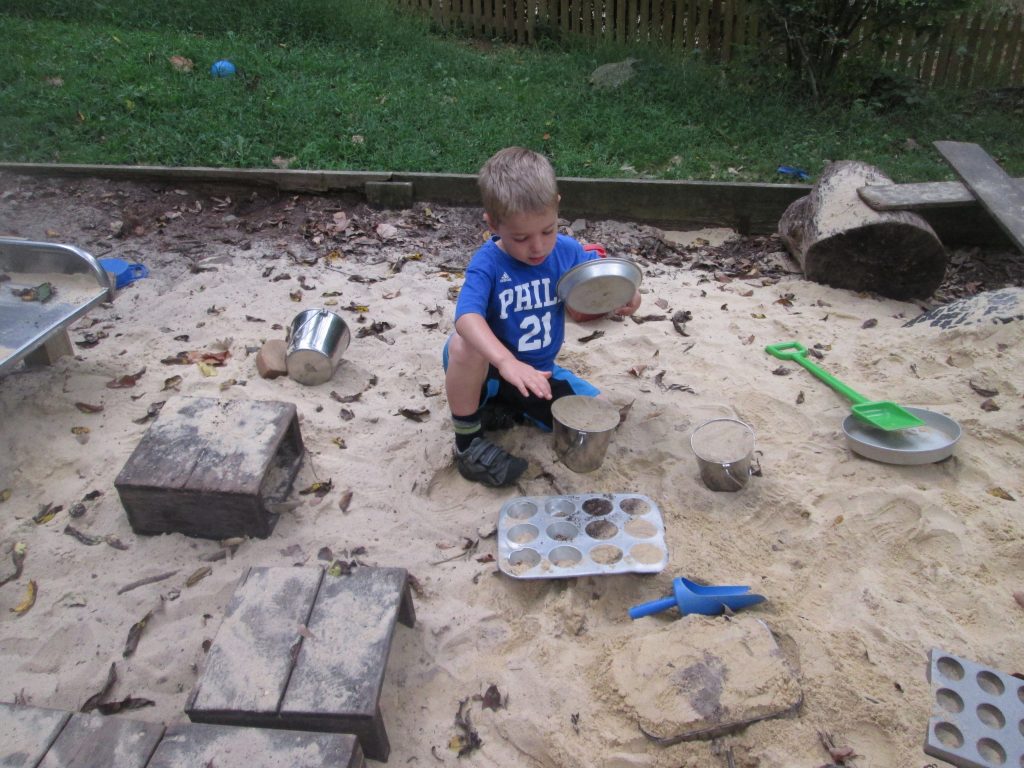
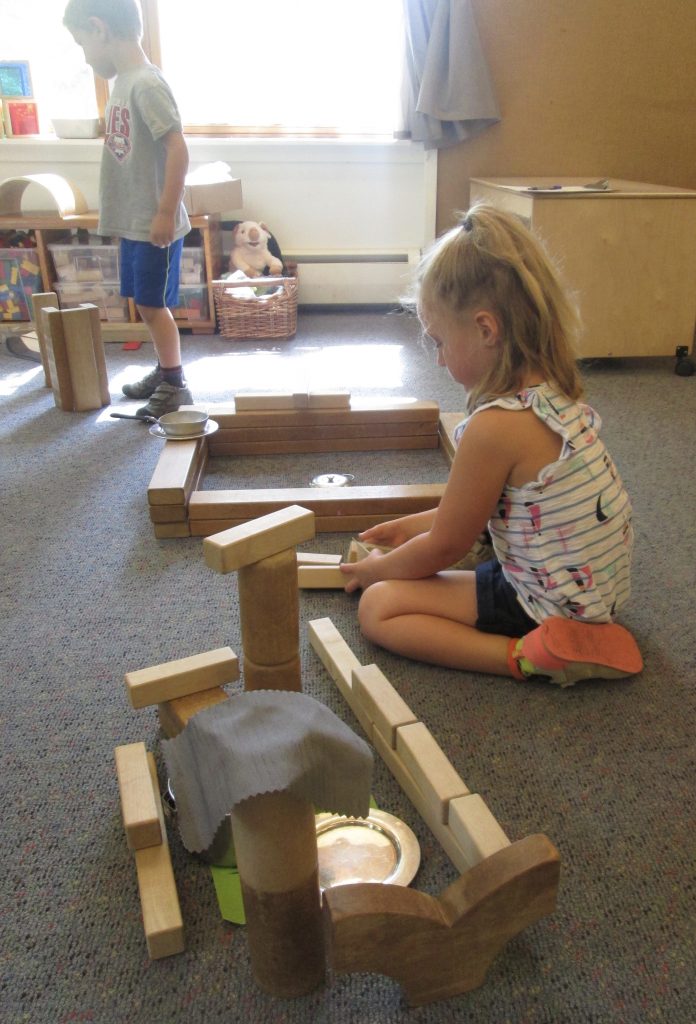
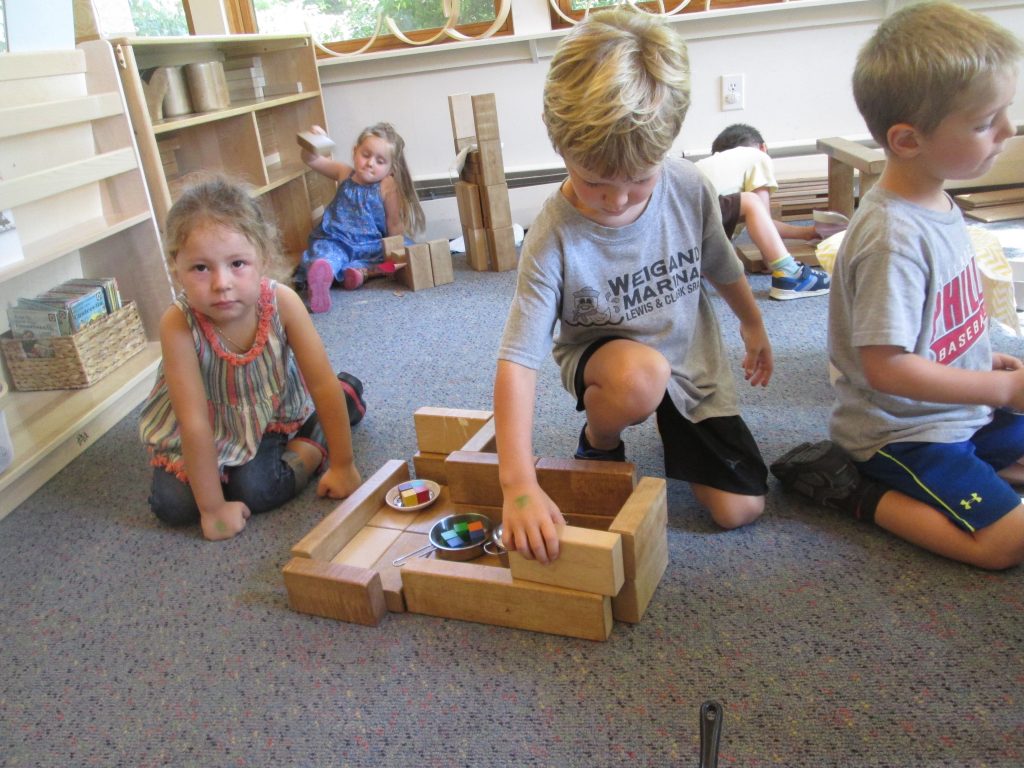

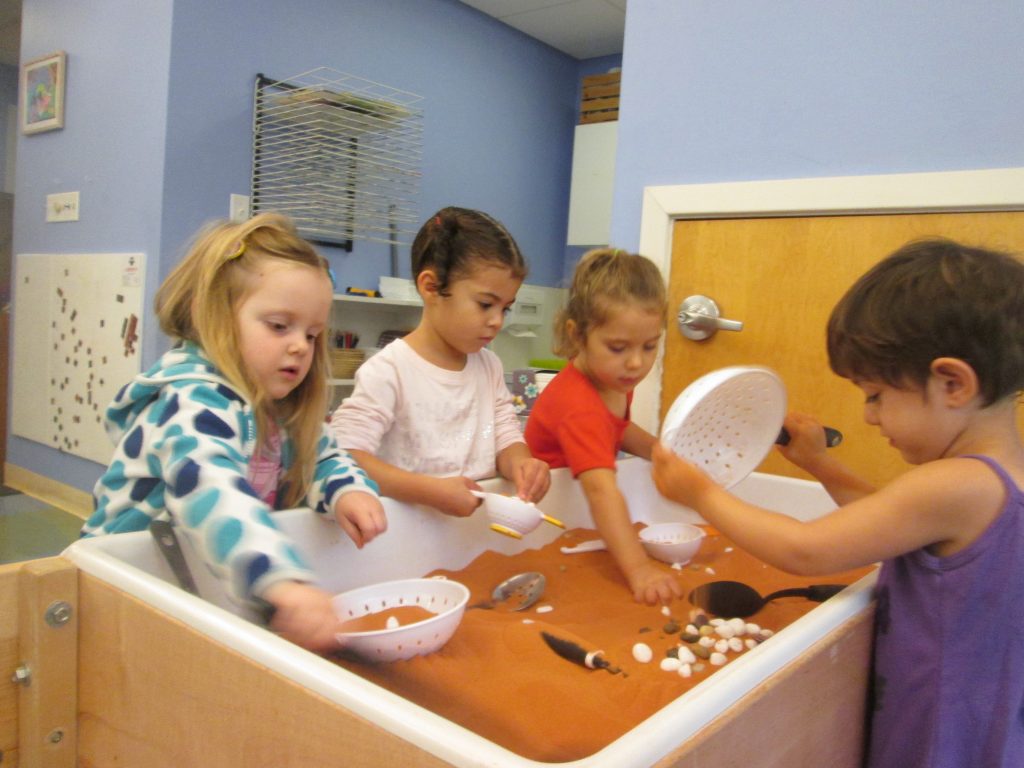

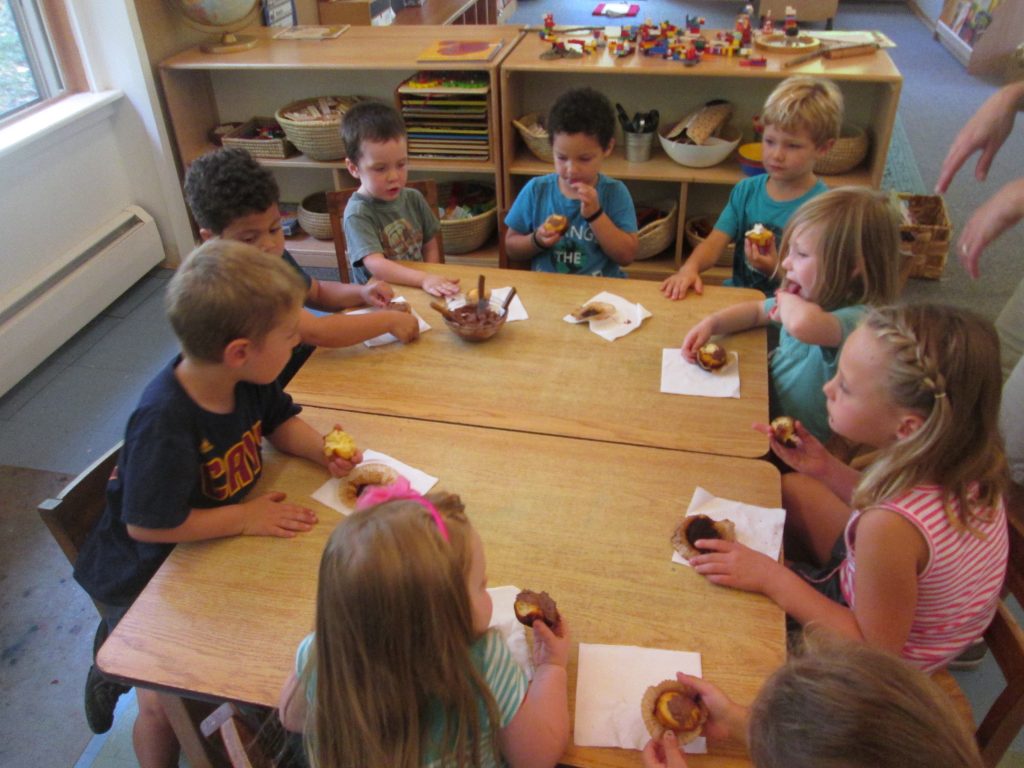
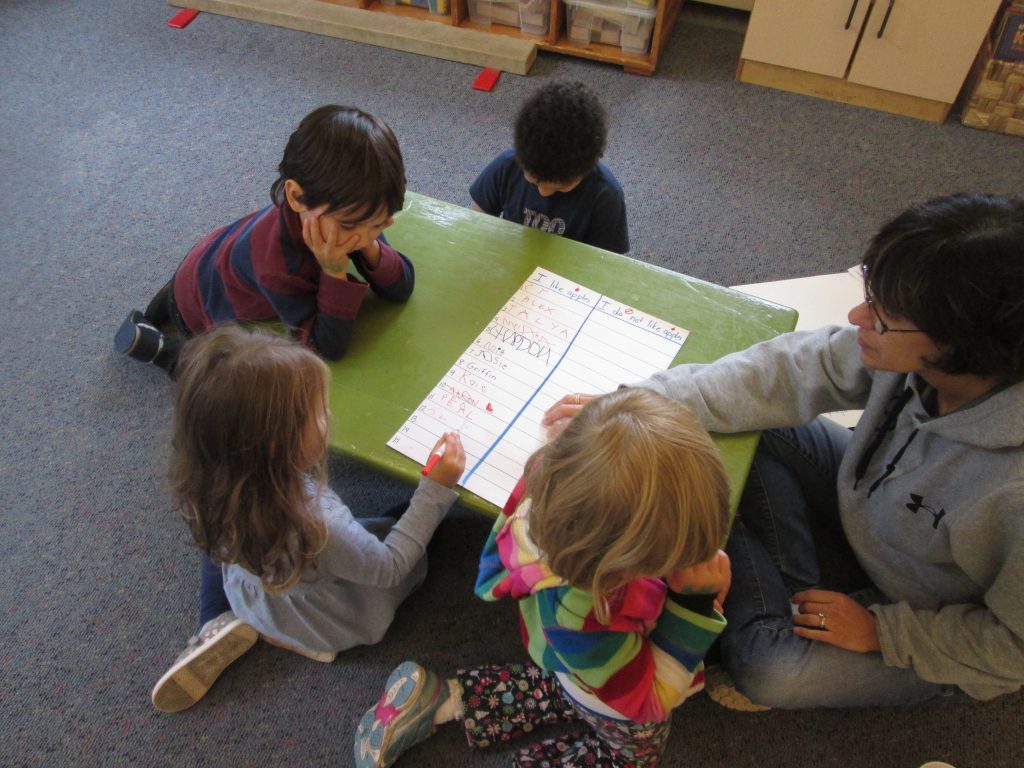
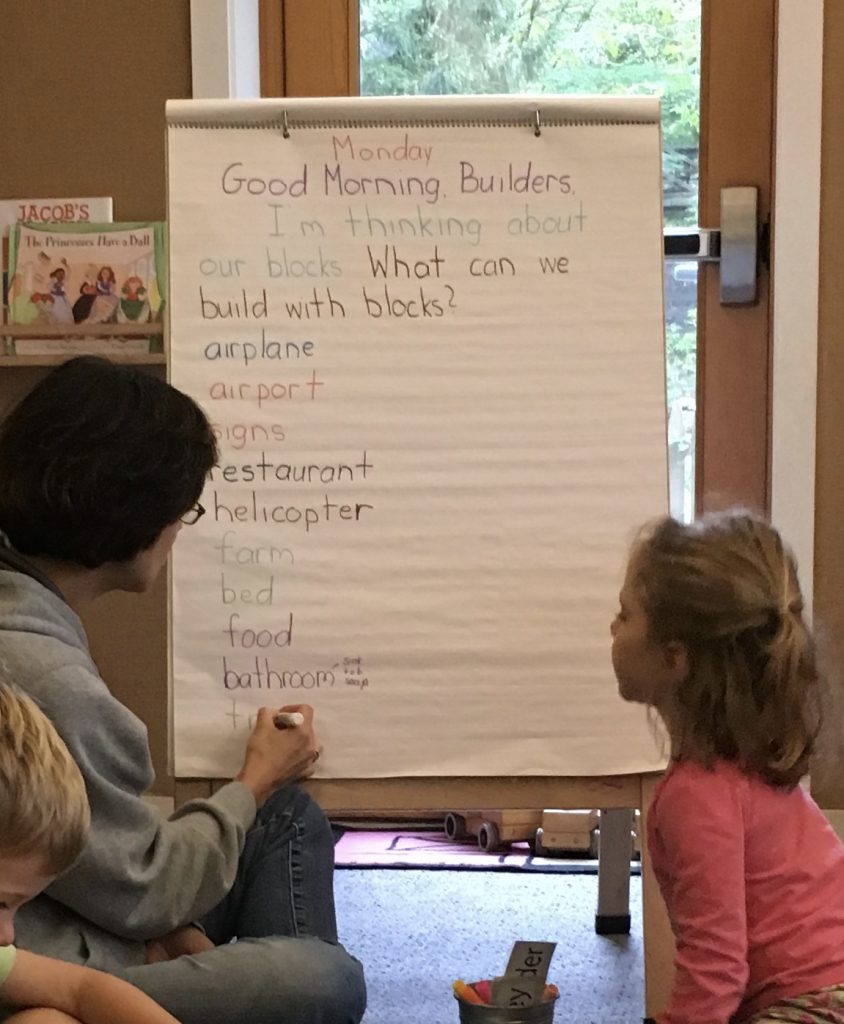
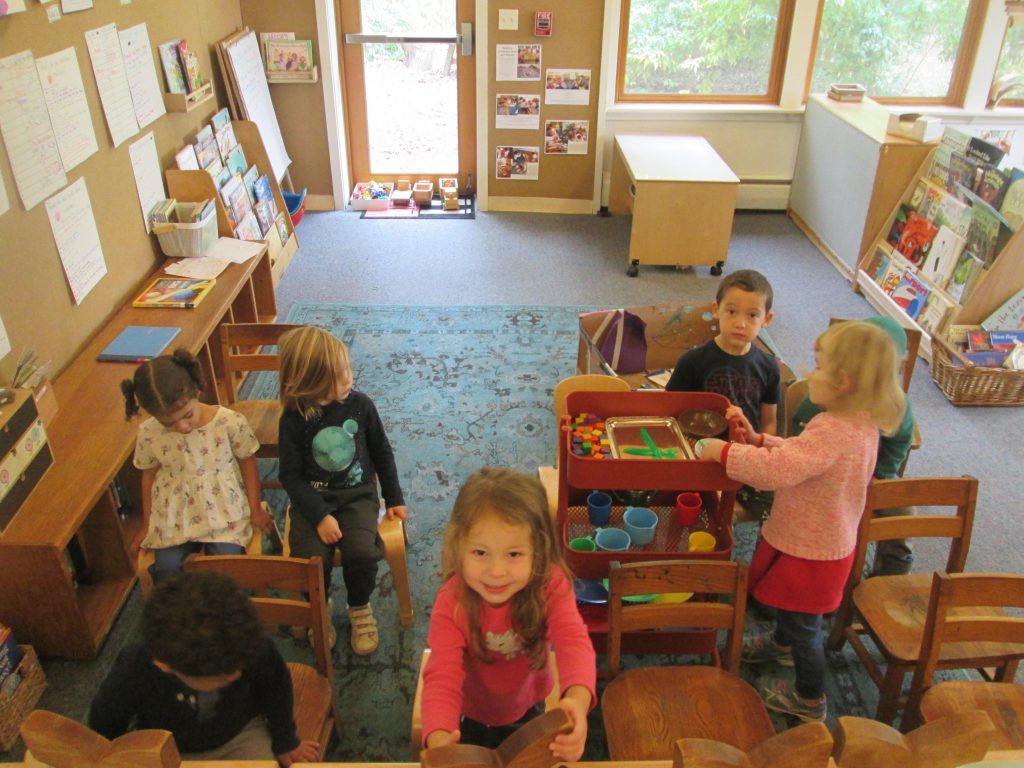
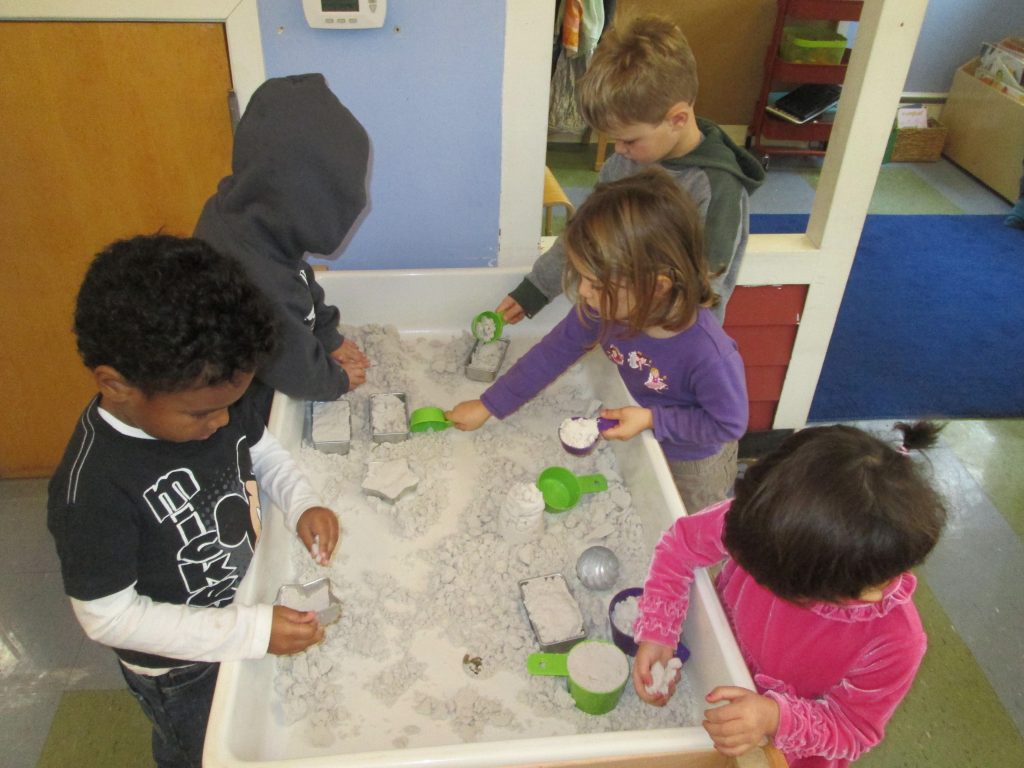
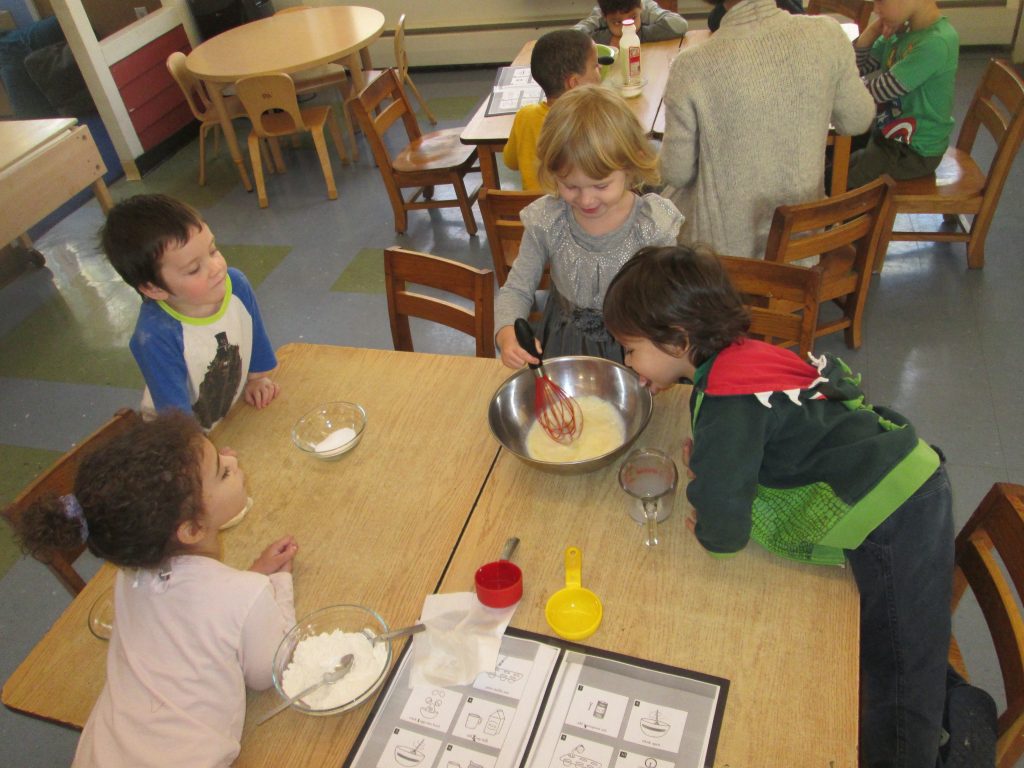
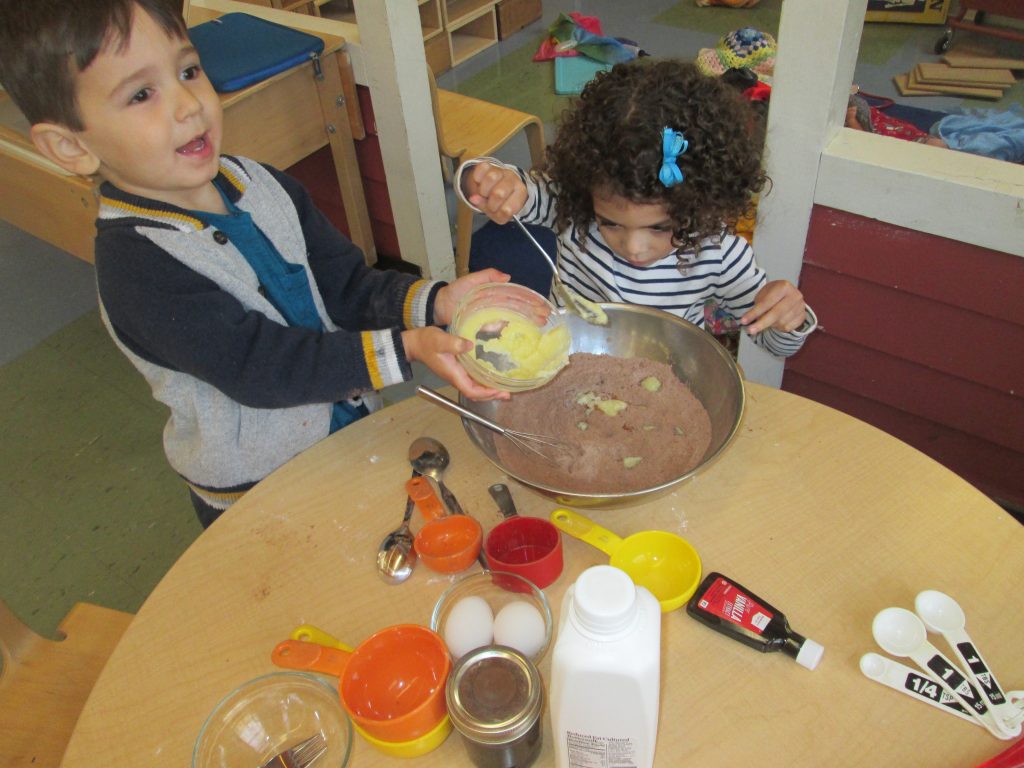

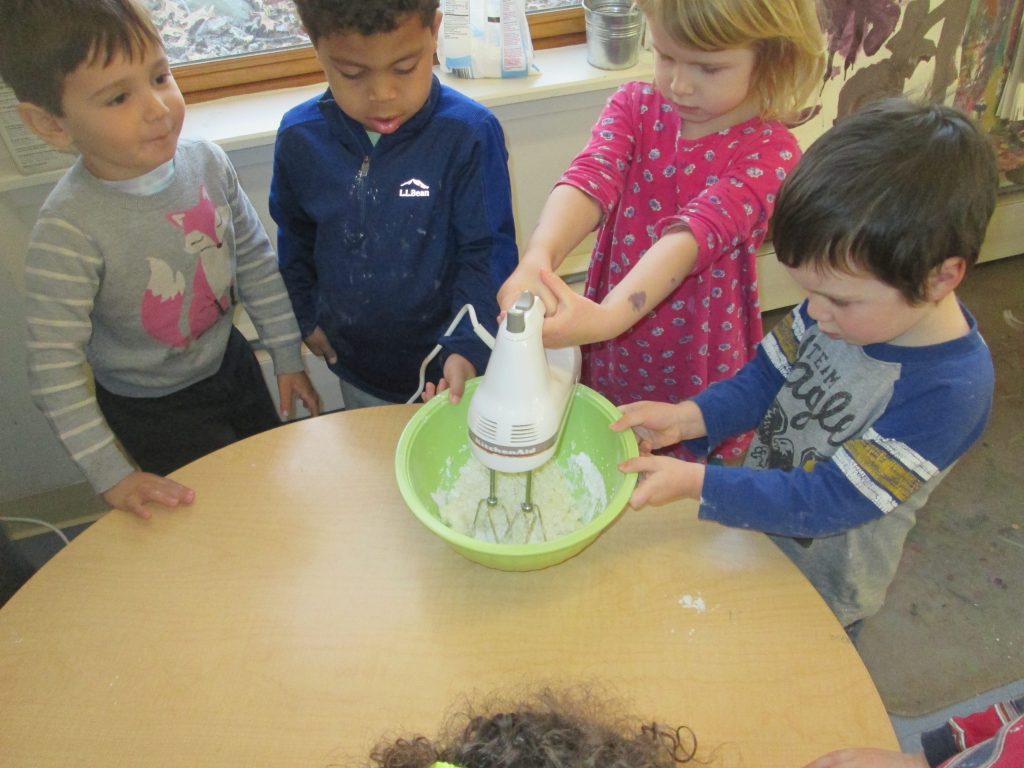
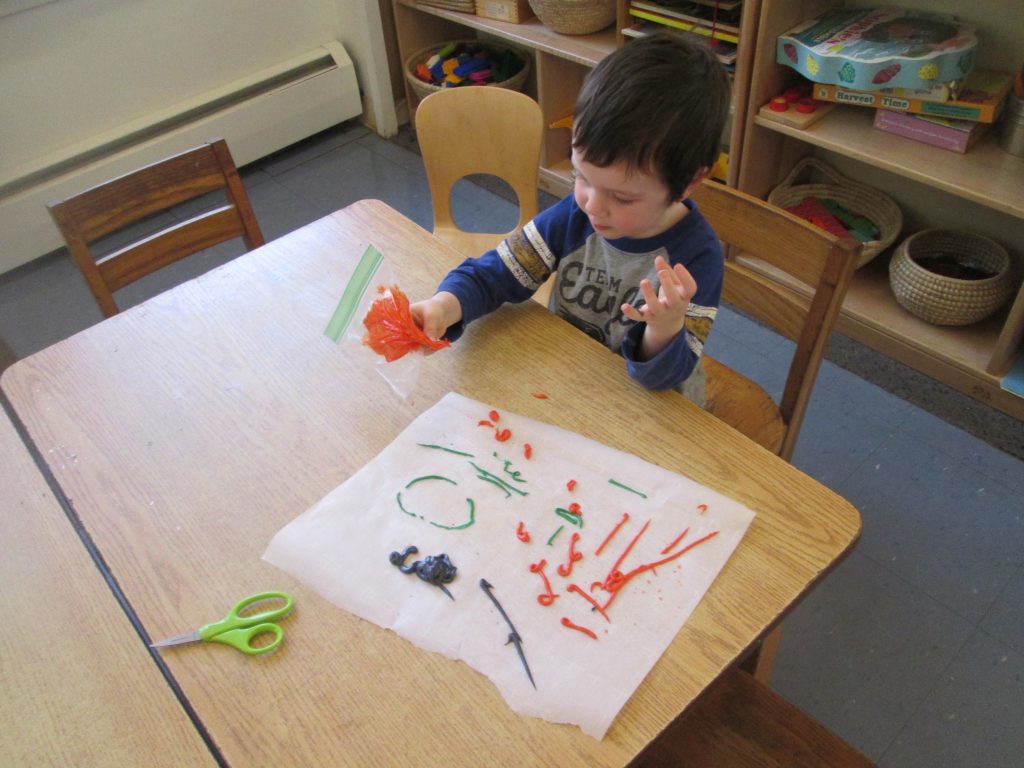
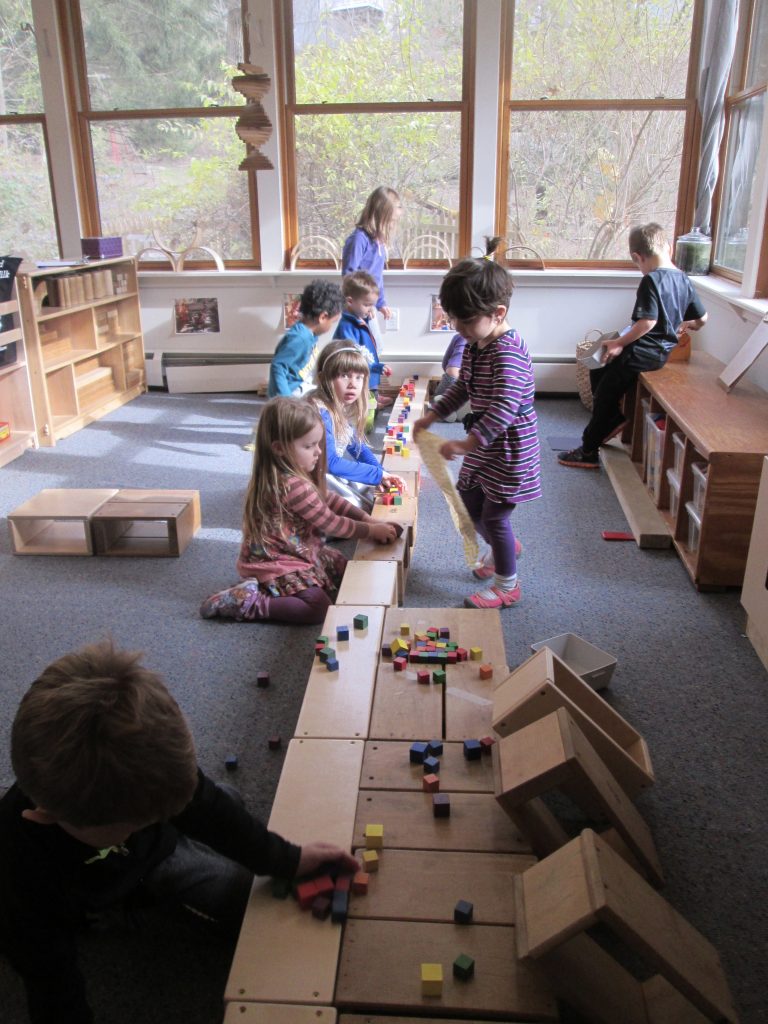
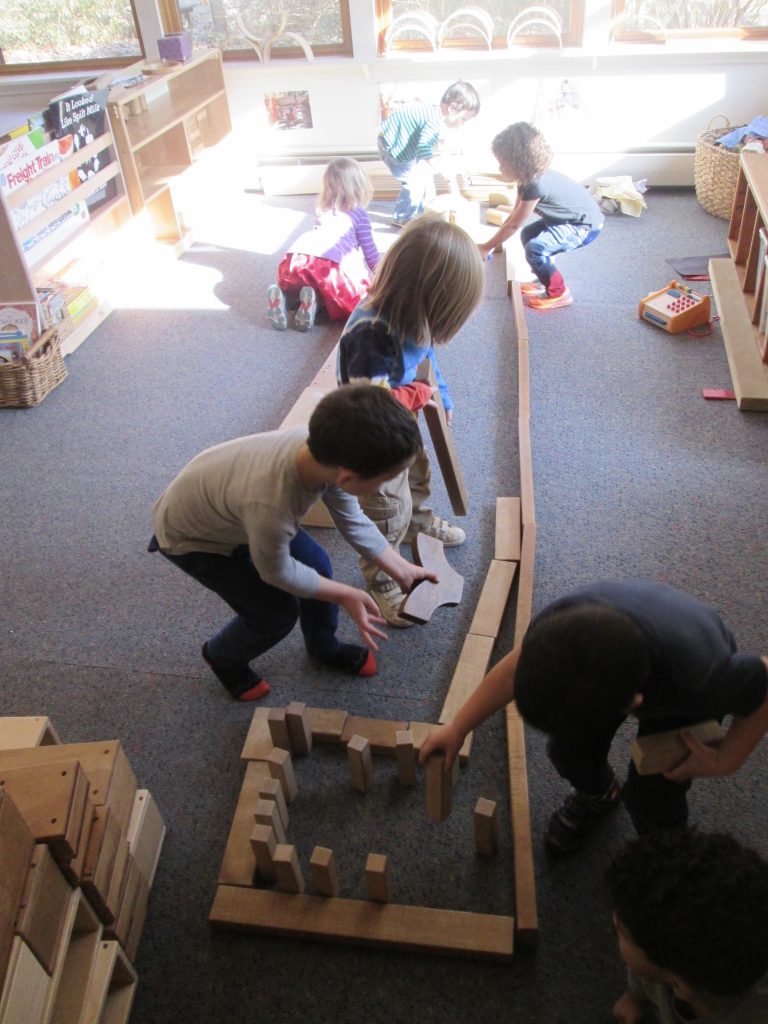
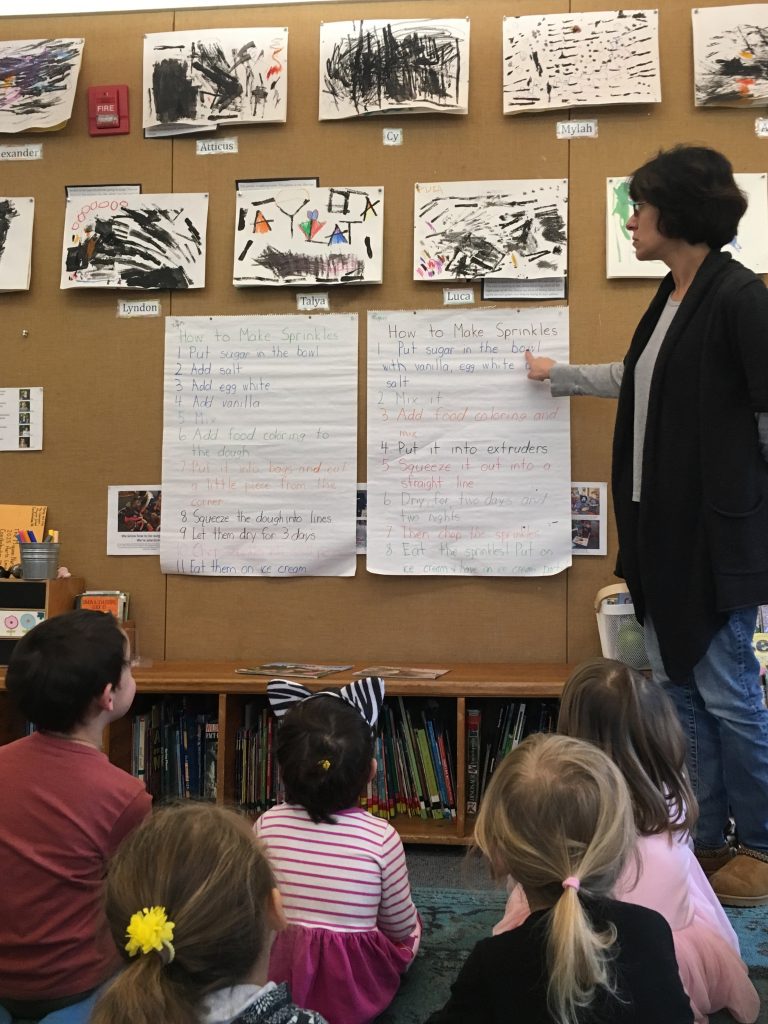
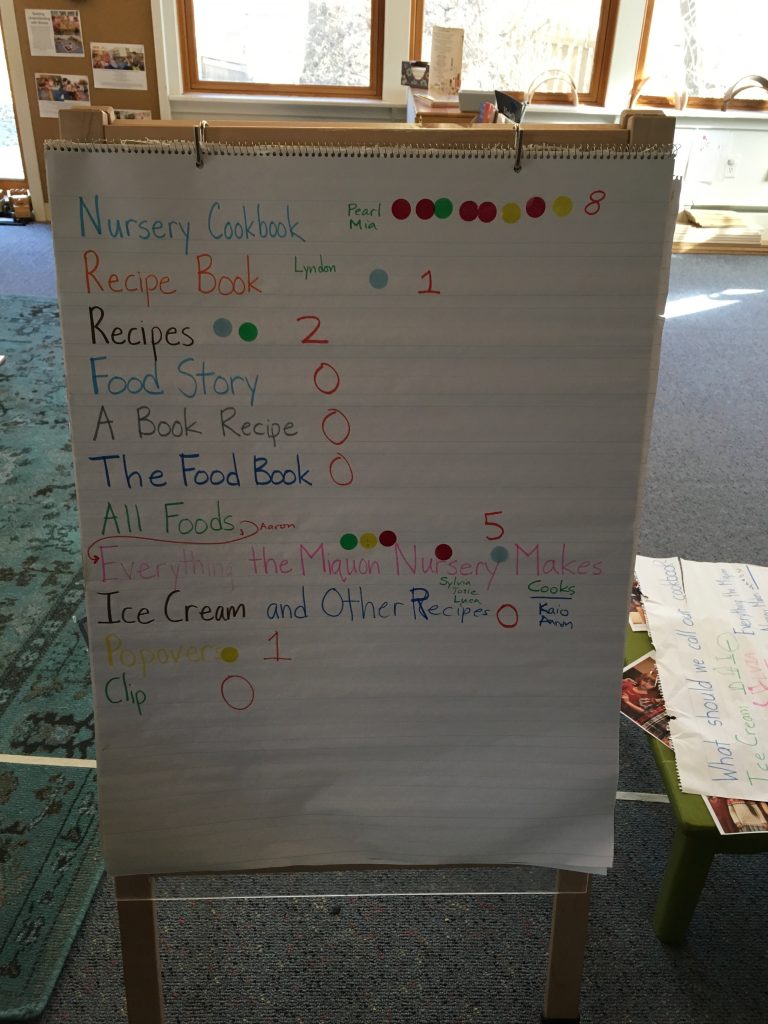
2 Responses to Sprinkle Factory